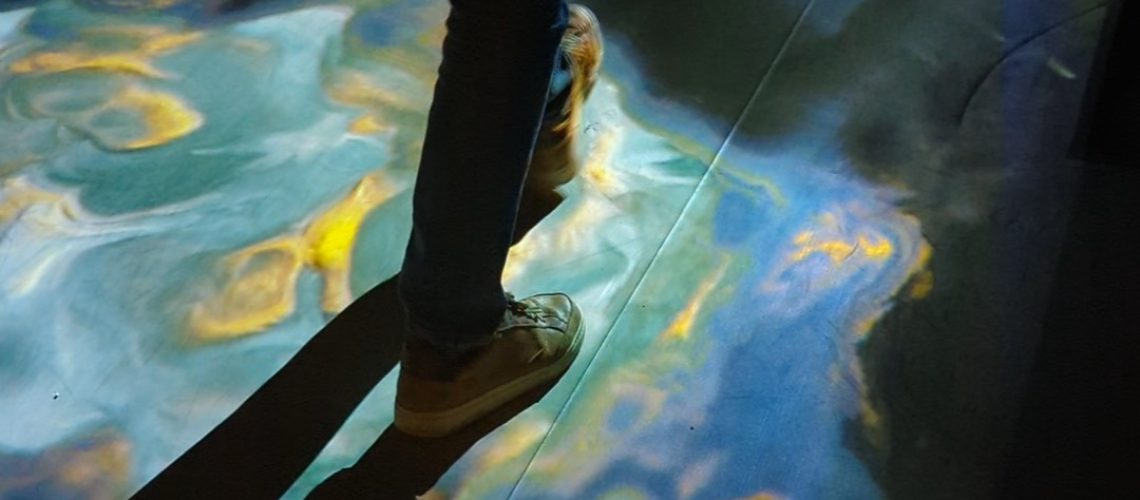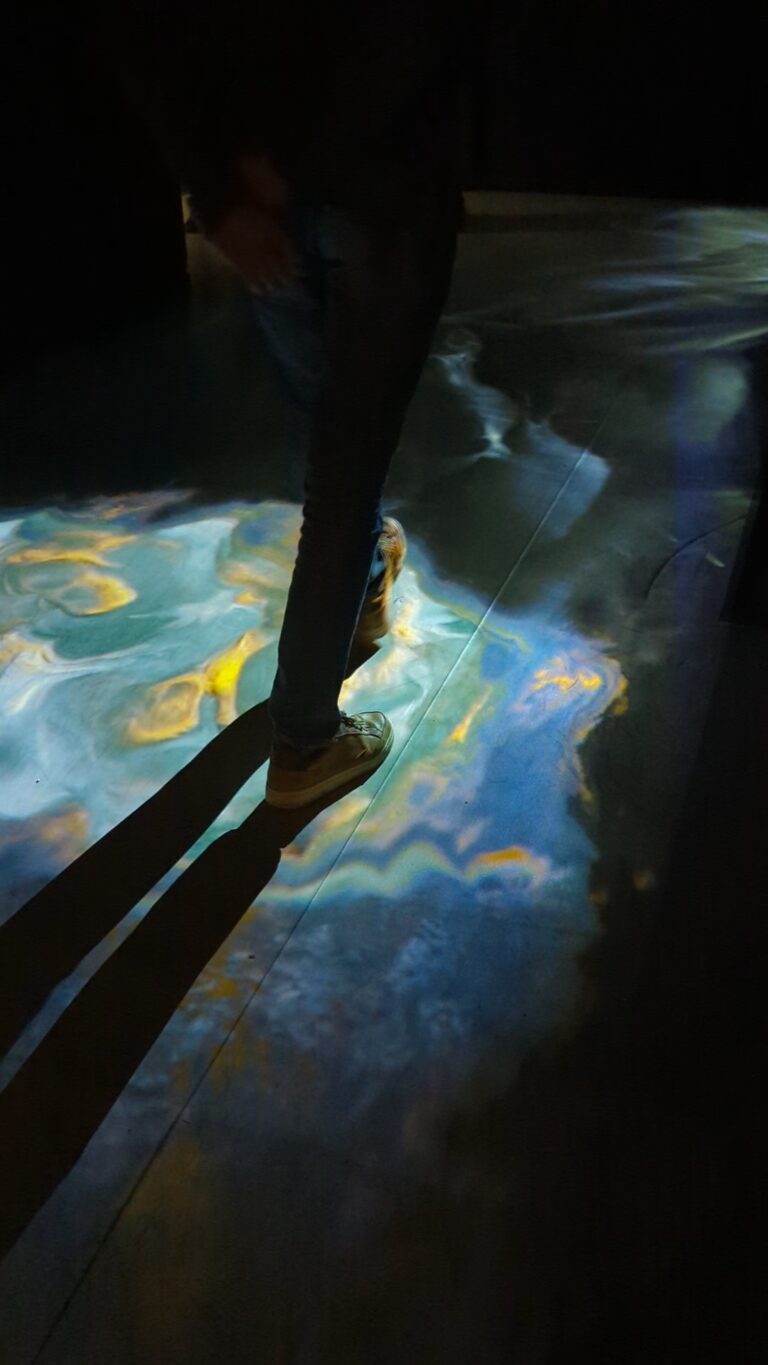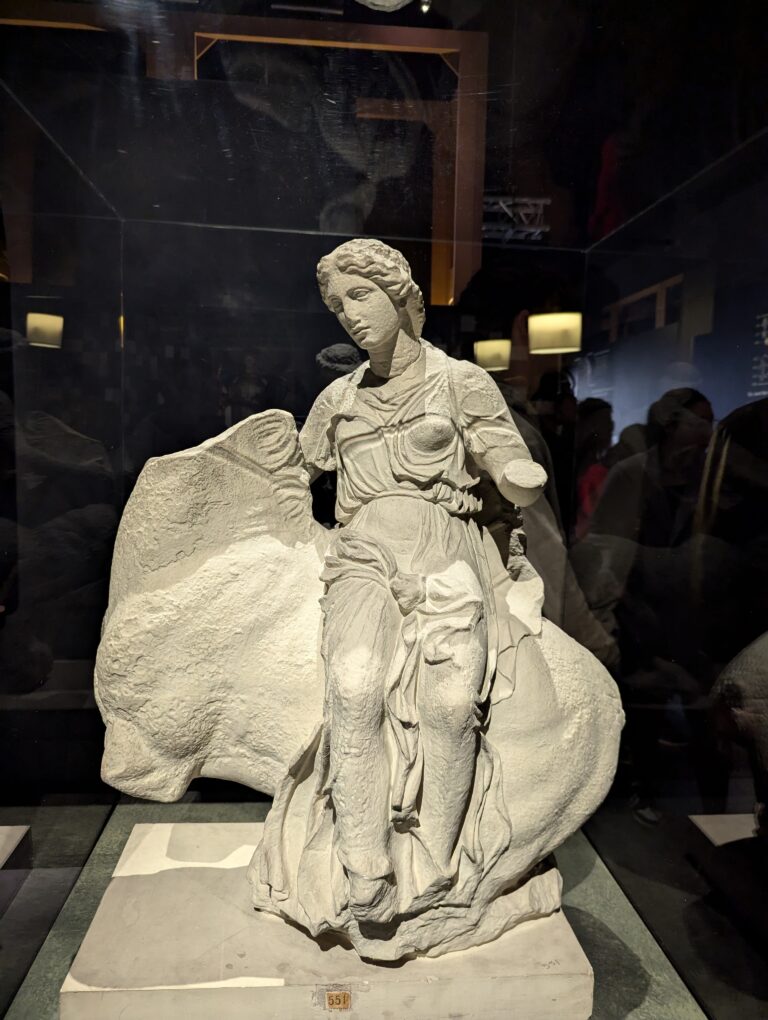

The Dream Exhibition
That Truly Makes You Dream
Reading time:
The Musée des Confluences in Lyon is a place I have quite a love-hate relationship with. In my past experiences, it’s a venue where there’s no middle ground—events are either brilliant or boring, of exceptionally high quality or mind-numbingly banal.
I know starting with this introduction might earn me some eye rolls (and probably the museum’s disapproval), but honesty in my reviews is a non-negotiable value for me—even if my opinion might not be the most popular.
That’s why the dream exhibition could have either been something stunning or a complete letdown, given the theme. Thankfully, it turned out to be stunning.

THE MUSEUM
The Musée des Confluences explores the story of life and humanity through an interdisciplinary lens, addressing universal questions about origins, cultural diversity, and humanity’s place in the natural world.
Its permanent exhibitions blend science and culture, sparking curiosity and wonder. The museum houses 3.5 million artifacts, spanning five centuries, from Lyon’s former museums, including the natural history, Guimet, and colonial museums.
The Musée des Confluences owes its name and architectural design to its unique location at the confluence of the Rhône and Saône rivers, symbolizing convergence and fluidity. Designed by Coop Himmelb(l)au, the building blends seamlessly with nature, serving as a bridge visitors can cross freely without needing a ticket.
With its multifaceted, ever-changing exterior, the museum embodies the balance between nature and culture, past and present. Inside, the “Crystal” welcomes the city with light-filled spaces, while the “Cloud” houses its exhibitions.
Don’t forget to take a walk above the waters where the Rhône and Saône meet! Exit through the door near the gift shop to find the outdoor terrace at ground level, built over the rivers. A transparent walkway will let you literally walk on water!
WHY VISIT?
If you’re a tourist, this is one of Lyon’s most “tourist-friendly” museums—especially for English speakers. Exhibits and collection descriptions are always available in both French and English. If you like experiential museums that aren’t too traditional, this is the museum for you. If you’re visiting with children, the museum is very interactive, which keeps the visit far from boring. And don’t forget to ask for the “book game” to explore the museum—often available for temporary exhibitions too—free for children aged 7 and up.
Other amenities include:
- Free Wi-Fi
- Museum maps in French and English
- Cloakroom: Free for visitors
- Mobility equipment loan: Walking stick, seat, wheelchair, stroller, etc. (available free of charge at the cloakroom)
- Water fountains: Two fountains installed at the hall and on level -1
- Baby-changing tables: Available on levels -1, 1, and 2
THE EXHIBITION
Let’s start by saying that the topic itself is fascinating. The museum approaches it from many angles, both scientific and artistic, without ever getting boring. This is definitely the strength of the exhibition: the flow of the visit never feels dull and successfully keeps the attention of visitors of all ages. The exhibition provides both classic elements, like paintings related to Aboriginal dreams, and modern references, like video game quotes and audio guide experiences (both in English and French!) delivered via comfortable sofas where you lie down and “dream,” listening to the voice coming from the furniture. This approach ensures no one feels bored, no matter their age.
This is a clever move by the museum, as it uses thematic rooms with various sources of inspiration and different media suitable for all ages. Visitors are free to explore and choose the media that suits them best. You’ll see children lying on sofas listening to the audio guides as if they’re bedtime stories, while adults admire original works of art (of exceptional value!) and teenagers watch video clips from videogames explaining the concept of dreams in ancient Greek culture.
The visitor is not obligated to see everything, but in each room, there’s surely something of interest—and that’s the real highlight of this exhibition.
Now, let’s dive into what we do for a third of our lives: dream.

THE VISITING PATH
The visit lasts around two hours if you check out most of the displayed objects (like me), or about an hour if you focus on the parts that interest you most, making it enjoyable for a wide audience considering the fairly general theme. Also, remember that the museum hosts other, shorter, but equally interesting exhibitions, so I always recommend starting with this one and saving the temporary exhibitions and permanent collections for the end.
The exhibition is divided into 8 rooms with the following themes:
1: Dreaming under electrodes
What can contemporary science teach us about dreams?
2: Dream incubation temples
The ritual of incubation in Antiquity
3: A portal between two worlds
In many cultures, dreams are interpreted as a space for encounters and communication between beings, whether human or non-human, living or dead.
4: Artists’ visions
Dreams accompany the artistic history of the Western World.
5: Tested by dreams
A nightmare expresses a failure of the emotion regulation process during sleep.
6: The key to dreams
Oneiromancy, the art of interpreting dreams, has its roots in Antiquity.
7: On the couch
According to Austrian neurologist and psychologist Sigmund Freud, dreams are the “royal road to the unconscious.”
8: Dream journals, in the dreamer’s private world
Numerous individuals, anonymous and distinguished alike, have bequeathed us invaluable historical and sociological testimonies via their dream journals.
MY FAVORITE ASPECTS
As an illustrator (yes, I draw and write books in addition to being a tour guide!), my absolute favorite piece was an original hand-drawn plate from one of the cornerstones of comic book history: “Little Nemo” by Winsor McCay.
I also loved the study by Jean-Auguste-Dominique Ingres (“Étude pour Le Songe d’Ossian,” 1813).
The Dreamachine by Brion Gysin, from the Centre Pompidou in Paris, on display here, is fascinating. The famous footage of John Lennon’s fascination with it is equally intriguing. A countercultural creation of the Beat Generation, this utopian yet captivating project is a fascinating alternative to television.
So, yes, you can tell that my favorite room was definitely the one dedicated to artists, especially because of its giant central installation, which I’ll leave as a surprise for you to discover.
Poetically, there’s also the chance to record the most beautiful dream you’ve ever had, contributing to building a library of (good) dreams.
It’s an exhibition I highly recommend because it leaves us contemplating the fascinating fact that we spend a third of our lives in a dimension where we’re completely free and still know almost nothing about it. A world just waiting to be explored, where the only passport required is simply to close your eyes.
PRATICAL INFORMATION
Musée des Confluences
86 quai Perrache
69002 Lyon
“Le temps d’un rêve” temporary exhibition.
From October 18, 2024, to August 24, 2025.
Opening hours:
Tuesday to Sunday
10:30 am to 6:30 pm
Open late until 10:00 pm on the first Thursday of the month
https://museedesconfluences.fr/en/plan-my-visit/opening-hours
How to get there?
Tram stop “Musée des Confluences” (Tram 1, also called T1).
The tram is easy to catch from Perrache station, just 5 minutes on foot from Place Bellecour. The ride lasts no more than 10 minutes, so you’ll be at the museum in 15 minutes from downtown.
Note: There’s been an increase in pickpocket activity at the T1 Musée des Confluences tram station, so be vigilant.
Tickets
Adult: 12 euros
Free: Lyon City Card holders, minors under 18, students under 26, people with disabilities, and their companions (see conditions here: https://museedesconfluences.fr/fr/preparer-ma-visite/tarifs-et-billetterie)
MORE INFO:
Museum link (in English): https://museedesconfluences.fr/en
Exhibition link (in English): https://museedesconfluences.fr/en/exhibits/temporary-exhibits/within-space-dream
